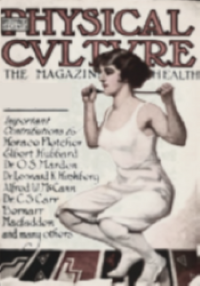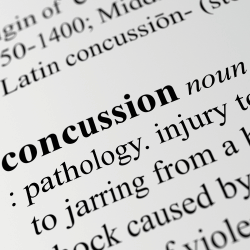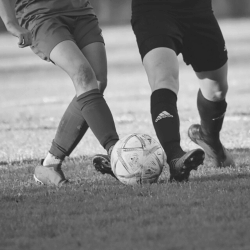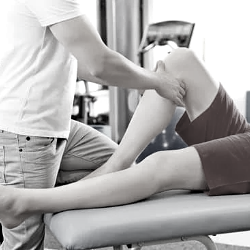The ‘Culture’ in the Physical Culture Movement – part II
Posted on July 5, 2022 by Movement Health in Physical Culture

A few years ago, I wrote about the ‘culture’ in Physical Culture (learn more here) and explored ideas such as the Romantic thinking of the late 1700-early 1800’s and how Physical Culture was more than moving/strengthening bodies and expanded into areas such as society, customs, science and the creative arts (Maloney, 2018). Such a discussion has at its foundation the noun definition of ‘culture’, definitions such as:
culture – noun
“the customary beliefs, social forms, and material traits of a racial, religious, or social group”
or
“enlightenment and excellence of taste acquired by intellectual and aesthetic training”
(Merriam-Webster Dictionary, Retrieved: 24th June, 2022).
However, when culture is used as a verb it has a shared synergy with the word ‘cultivate’ (Merriam-Webster Dictionary, Retrieved: 24th June, 2022) and may be defined as:
cultivate – verb
“to foster the growth of” (Merriam-Webster Dictionary, Retrieved: 24th June, 2022).
When the verb definition of ‘culture’ is applied to Physical Culture, the idea that emerges is, ‘to foster the growth of the physical’ or ‘physical cultivation’. So, what does this tell us about the Physical Culture Movement?
Johann Christoph Friedrich Guts Muths (1759-1839) a Prussian/German educator who was an early publisher on Physical Culture shared Romantic Philosopher Rousseau’s view that:
“If your wish is to increase the intelligence of your pupil, then you must strengthen the forces which rule it” (Rousseau, 1970 p.261).
Guts Muths wrote multiple texts referencing exercises taken from the Ancient Greek Pentathlon, traditional dancing and military exercises and how educators could use them to physically cultivate optimal learning for school students (Pfister, 2003).
European Gymnastic Physical Culture system, the German Turnen used their methods to physically cultivate citizenship and community. Turnen (learn more here) was founded by Prussian/German educator Friedrich Ludwig Jahn (1778-1852) who was inspired by Guts Muths to introduce Physical Culture to his Berlin grammar students for cultivation of learning and character. In time progressive political philosophy and traditional songs were added to the Turnen system to help cultivate German citizenship in a post-Napoleonic Europe. Eventually, Turnverein community clubs were also established, and they started to cultivate liberal discussion around revolution directed towards the reigning monarchs (Pfister, 2003).
Strongman Physical Culture (learn more here) was less political and emphasised physical cultivation as a means of improved health. However, their approaches to physical cultivation expanded beyond their various exercises and included an array of complimentary health practises. Eugen Sandow (1867-1925) espoused exercising outdoors as a means of physical cultivation (Sandow, 1894, 1897) and Bernarr MacFadden (1868-1955) advocated for an approach to Physical Culture that included exercise and consumption of a vegetarian diet (Endres, 2011).
Strongman Physical Culturists and other commercially minded Physical Culturists such as JP Müller (1866-1938) and Joseph Pilates (1883-1967) wrote about an array of physiological ‘levers’ available to guide cultivation of good health. JP Muller wrote books about the health benefits of fresh air (Müller, 1921) and bathing practises that support the process of physical cultivation (Müller, 1904). Joseph Pilates who is predominantly referenced today for his exercise system, often preached that physical cultivation required a mix of work/rest/play (Pilates & Miller, 1945).
Around the same time as the beginnings of Strongman Physical Culture (late 1800s-early 1900s) a greater scientific understanding of the human body began to emerge. The language used by Physicians to understand physical cultivation was that exercise was ‘hygienic’ (concerned with muscular, circulatory and digestive function) and ‘educative’ (concerned with the nervous system, brain and by extension ‘the mind’; how an individual developed; and how ‘character’ was formed) (Park, 2007). Somatic Physical Culture worked in a similar space to this ‘educative’ description and was interested in physically cultivating the mind and body together. Whilst studying medicine Somatic Physical culturist Dr Bess Mensendieck (1864-1957) is said to have witnessed an electrical current being used to stimulate muscle activity and concluded that if an electrical current can stimulate a muscle, then so can the mind (Veder, 2011).
When the verb definition of ‘culture’ is used to understand the term Physical Culture two ideas emerge.
- Physical Culture used exercise/bodily movement to ‘cultivate’ learning, citizenship, community, and character.
- Physical Culture integrated exercise/bodily movement with ideas such as spending time outdoors, nutrition, hygiene, life balance and mind-body. Collectively all these practises were a path for individuals to support their physiology and cultivate good health.
So why did the term Physical Culture stop being used?
During the late 1800s-early 1900s Physical Culture was in a race with competitive sport to become broader societies preferred paradigm for bodily movement and history has shown that competitive sport prevailed (Parks, 2007). Alongside this in 1899 American Strongman Physical Culturist Bernarr MacFadden started publishing a magazine titled ‘Physical Culture’ and it would seem he met with some resistance from the American Medical Association (AMA) because of his ideas around Physical Culture and health. MacFadden was often critical of the AMA in his magazine, and they would often respond by calling him a ‘quack’, in time the AMA succeeded in marginalising MacFadden and the term Physical Culture (Todd, 2009).
For me use of the word ‘culture’ in Physical Culture gives it so many interesting levels and has a depth beyond more modern terms such as ‘exercise’ and ‘fitness’, maybe it’s time to bring Physical Culture back?
Thanks for reading, Warwick..
Endres, K.L. (2011). The Feminism of Bernarr MacFadden: Physical Culture Magazine and the Empowerment of Women. Media History Monographs 13(2), 1-14.
Maloney, W. (2018). The ‘Culture’ in the Physical Culture Movement. Movement Health Blog. Retrieved: 24th June, 2022 from: https://www.movementhealth.com.au/news/culture-physical-culture-movement/
Merriam-Webster Dictionary. Cultivate. Retrieved: 24th June, 2022 from: https://www.merriam-webster.com/dictionary/cultivate
Merriam-Webster Dictionary. Culture. Retrieved: 24th June, 2022 from: https://www.merriam-webster.com/dictionary/culture
Müller, J.P. (1904). My System: 15 Minutes’ Work a Day for Health’s Sake (Classic Reprint). London, UK: Forgotten Books.
Müller, J.P. (1921). My Sun-Bathing and Fresh-Air System. Alcester, UK: Read Books.
Park, R. (2007). Physiologists, Physicians, and Physical Educators: Nineteenth Century Biology and Exercise, Hygienic and Educative. The International Journal of the History of Sport 24(12), 1637–1673.
Pfister, G. (2003). Cultural Confrontations, German Turnen, Swedish Gymnastics and English Sport- European Diversity in Physical Activities from a Historical Perspective. Culture, Sport, Society 6(1), 61-91.
Pilates, J.H. & Miller, W.J. (1945). Pilates’ Return to Life Through Contrology – A Pilates’ Primer: The Millennium Edition. Ashland, OR: Presentation Dynamics.
Rousseau, J-J. (1970). Emile oder über die Erziehung – Reprint. Stuttgart, DE: Reclam.
Sandow, E. (1894). Sandow on Physical Training. New York NY: J. Selwin Tait & Sons.
Sandow, E. (1897). Strength And How To Obtain It. London, UK: Gale & Polden, Ltd.
Todd, T. (2009). Physical Culture. Retrieved: 4th July, 2022 from: https://starkcenter.org/2009/09/physical-culture/
Veder, R. (2011). Seeing your way to health: the visual pedagogy of Bess Mensendieck’s physical culture system. The International Journal of the History of Sport 28(8-9), 1336-1352.





